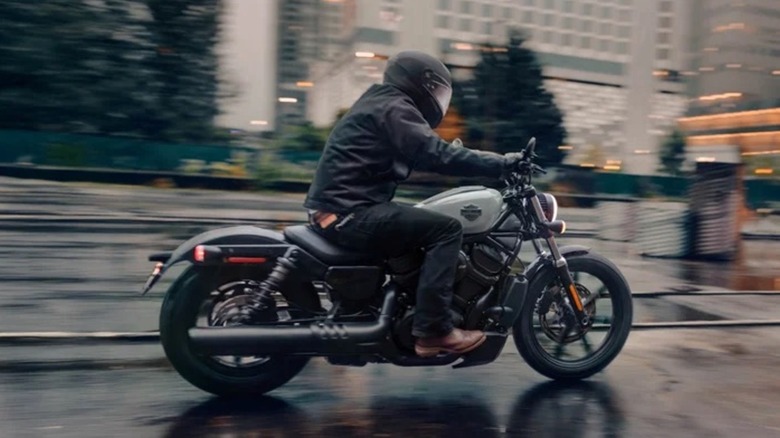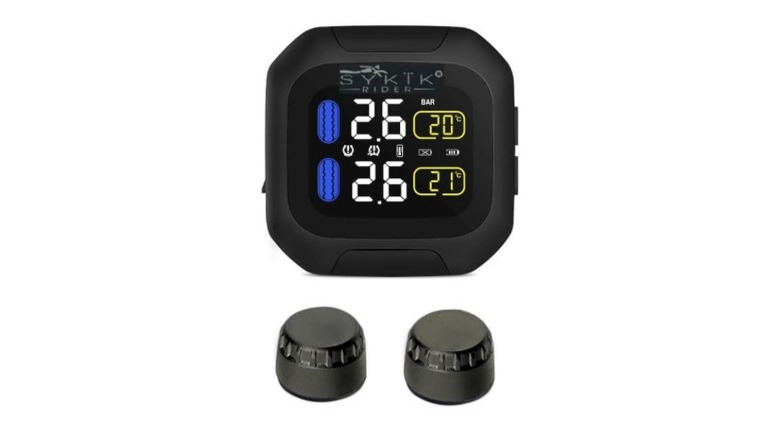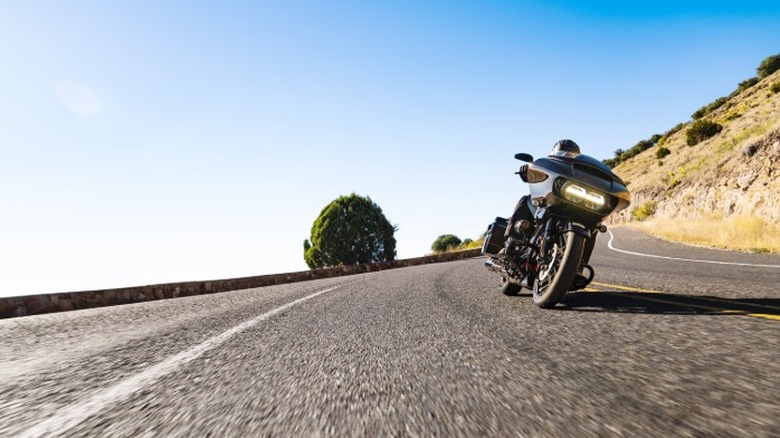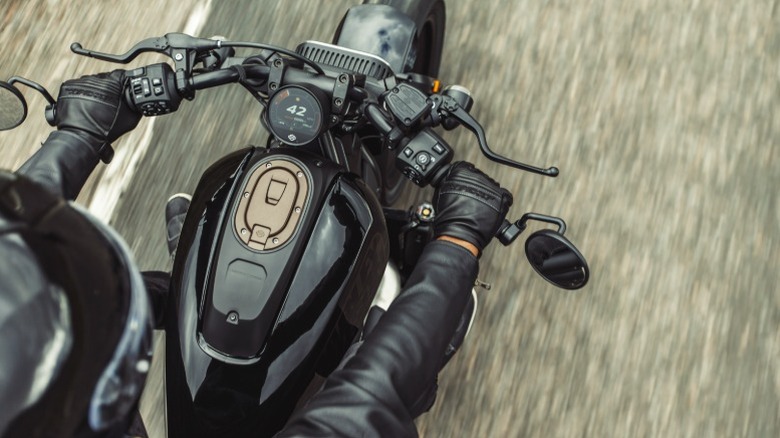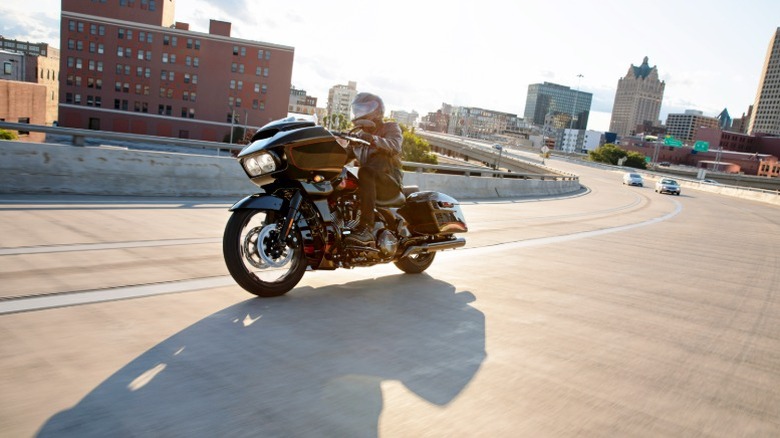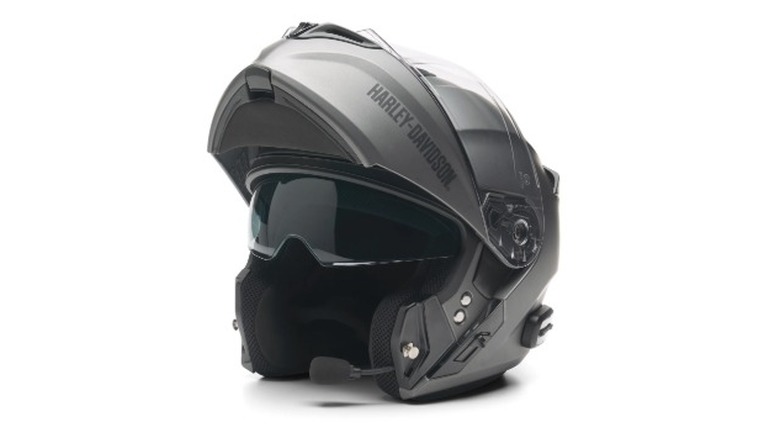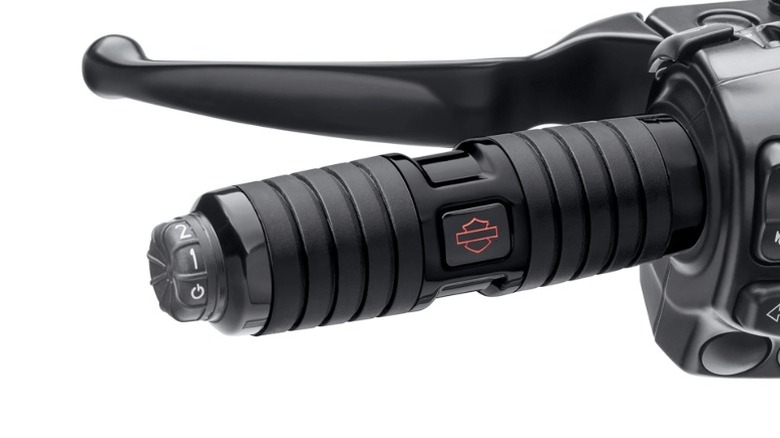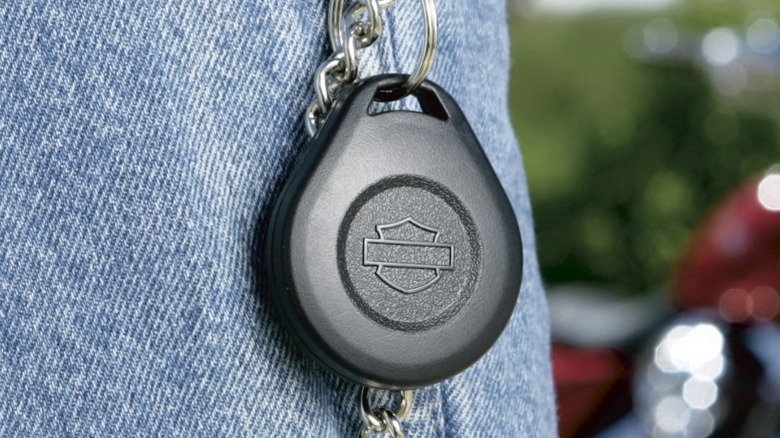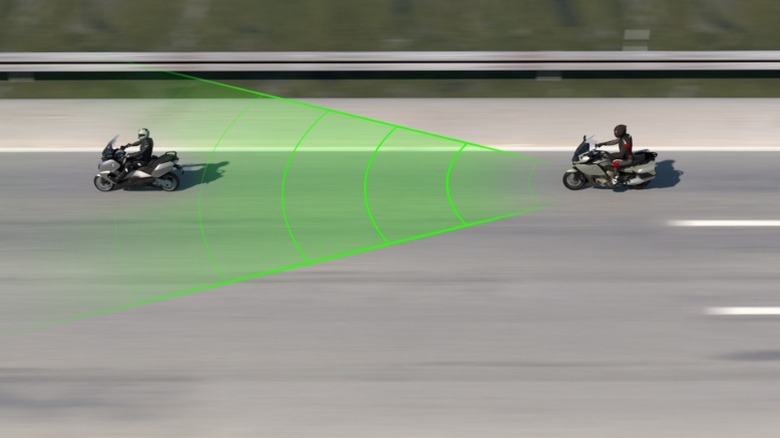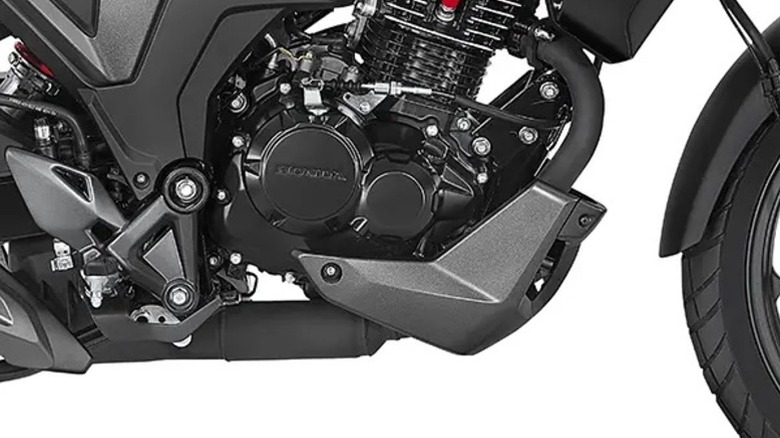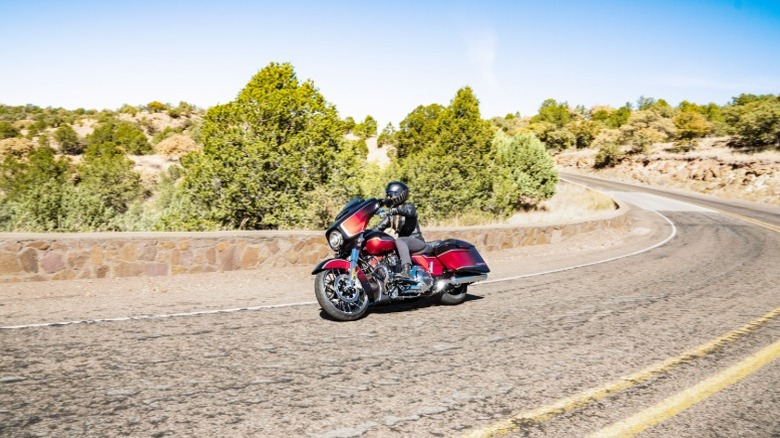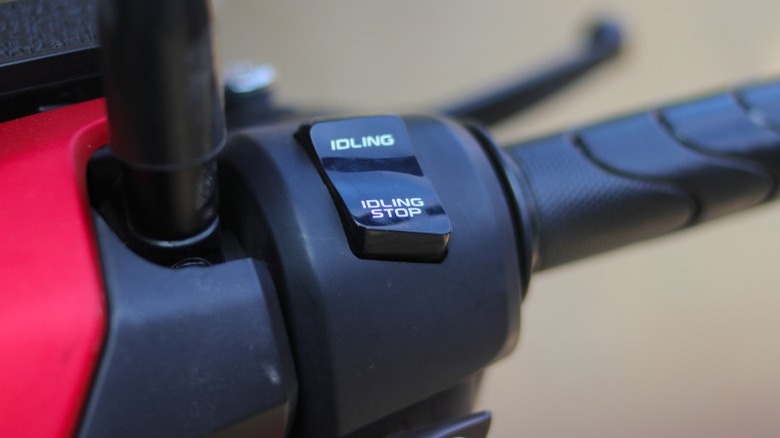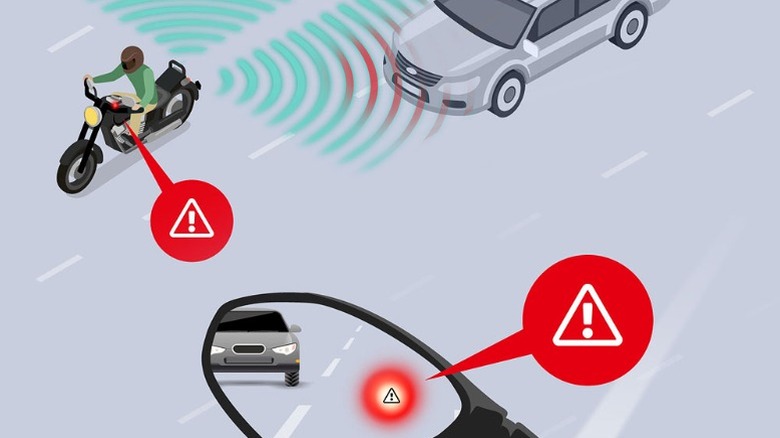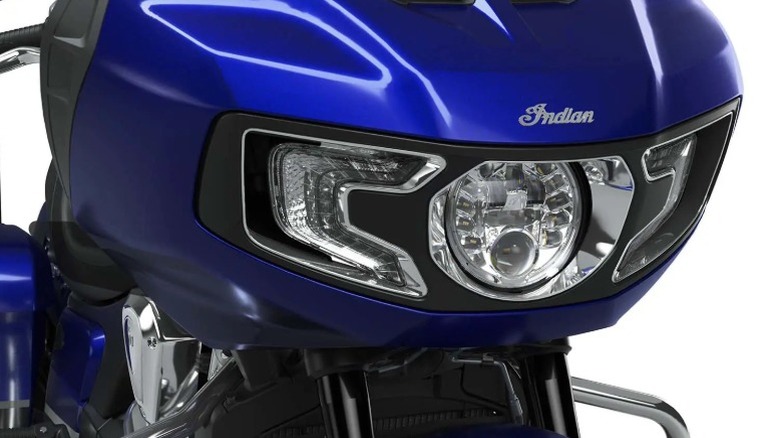13 Modern Motorcycle Features You Didn't Know You Needed
We may receive a commission on purchases made from links.
Motorcycles have come a long way from being simple steam-powered vehicles. These days, there's a button for just about everything on your bike. Ride modes, traction control, and even heated seats — you name it. But these features don't just make riding more convenient; they're also designed to keep you safe. And rightfully so, a 2023 study by the National Safety Council shows that motorcycles were involved in 15.5% of traffic fatalities, even though they only make up 3% of registered vehicles in the U.S.
As impressive as these features are, they can become overwhelming. Oftentimes, riders ignore them because they don't even know how they work or what they do. You may even have them functioning in the background without even realizing it. Regardless, you don't want to miss out on a much better riding experience because you lacked the right bit of information. That said, here are 13 modern motorcycle features you didn't know you needed.
1. Tire Pressure Monitoring System
Tire Pressure Monitoring Systems (TPMS) are a game-changer when it comes to safety and performance on your motorcycles. These devices monitor your tire pressure system and provide real-time updates, warning you of any possible threats during your ride, particularly the conditions of your tires. Some bikes come with TPMS as a built-in feature, but you might have to get the device separately on other models.
TPMS may be direct or indirect. For direct systems, pressure sensors are placed in the tires, which read the information and wirelessly transfer it to the central unit, informing you if your tire pressure is low. Indirect TPMS is less straightforward. With this system, wheel speed sensors detect if there's something wrong with the tire pressure. Wheel speed sensors can measure the rate of revolution of each tire, and if something appears off in rotation speed, it could be an indicator of a pressure issue. It isn't as accurate as the direct TPMS, but it's cheaper and easier to maintain.
2. Traction control system
Riding on slippery roads can be tricky. If you've had to navigate wet or sandy surfaces, you'll know the tire can struggle to grip the road, especially when it has begun to wear out. In these situations, traction control systems act as an extra layer of protection.
TCS monitors your wheels and can tell when your tires are losing traction. Say your rear wheel is spinning faster than the front wheel, it detects that there is a loss of grip, and applies a corresponding solution, like reducing the engine power or throttle input. It all depends on the system and the manufacturer. In older iterations, the electronic control unit would cut fuel supply to the engine, but this could cause problems, and so most modern systems have done away with this approach.
Traction control in most bikes is reactive, meaning that it intervenes when the bike has lost traction. In more advanced systems, however, it may also be predictive. That means it can use artificial intelligence to predict a loss of traction before it happens and adjust relevant controls to prevent it. Many high-performance bikes are already equipped with this feature, but if you're a beginner, it's something you really should look out for to keep you safe.
3. Riding modes
If you're an avid rider, dealing with a range of weather and road conditions is inevitable, so you'll need a bike that has some versatility. Riding modes adjust various electronic settings to optimize the bike's performance for different conditions. They are available in different forms and types.
One of the most common riding modes found on bikes is "Wet mode," also known as "Rain mode." When activated, it adjusts riding settings to suit wet conditions by increasing traction control and creating a soft throttle response. You will also often find "Sport mode" on bikes, which is designed for intense performance. It comes with more direct throttle response and less traction control intervention. "Road mode" typically gives you a more balanced experience ideal for daily navigation on dry roads. Some brands also offer a custom mode where you can adjust existing ride modes to your liking.
While riding modes are becoming increasingly common, they are sometimes exclusive to certain models. Harley-Davidson, for instance, recently introduced selectable ride modes for its 2025 Cruiser models. Meanwhile, this feature was already available on touring models before that.
4. Electronic linked braking
One of the things that makes riding a motorcycle tricky is the braking system. You can grab your front lever too hard and accidentally propel yourself off the bike, or apply too much force to the back lever and lose traction in the process. If you want to balance power, you'll have to apply force to both brakes together in the right ratio, but this is easier said than done. Electronic linked braking, also known as a combined braking system, solves this issue. With this system, the front and rear brakes are connected, so when you apply one brake, it immediately applies force to the other one.
Early concepts of linked braking were first developed by Honda, but today it's offered on other brands. Both on entry-level and high-performance models, although common on higher-end streetbikes. Harley-Davidson introduced its own all-new Reflex-linked brake system in 2019, using the latest inertial measurement unit (IMU) and ABS sensor technology. The brand emphasized, though, that it does not replace proper braking techniques, but merely acts as a rider aid. Nonetheless, the linked braking system simplifies operations, reduces braking distance, and improves stability.
5. Bluetooth connectivity
Bluetooth connectivity can really improve your riding experience. First off, access to hands-free communication is a big safety hack. Most riders communicate during their trips, and doing that will ordinarily require them to either stop their trip or ride with one hand. With Bluetooth connectivity, you can access these functions seamlessly. So, if you're riding in groups, you always stay connected, sharing updates and information through Bluetooth networking.
Bluetooth systems aren't just for communication, though; they allow you to connect your smartphones for navigation and access information through the TFT display. There's also the entertainment part. You can listen to music, the radio, podcasts, and even audiobooks during your trip, all without having to take your eyes off the road. The range of features you get with Bluetooth can be vast, but it pretty much boils down to the brand. Yamaha's Connect X, for instance, comes with a mobile application that can be connected to your bike. From this platform, you can view information like your average speed, battery voltage, distance, etc.
6. Heated grips & seats
If you live somewhere cold or ride during the winter, one modern motorcycle feature that'll definitely come in clutch is heated grips and seats. Regular bike seats rely on your body heat to provide warmth, but this hardly does the job when the temperature is sub-zero, and extra layers of clothing aren't enough. Heated grips may also come with temperature settings, making them suitable for year-round use.
Heated grips and seats are not standard features on most motorcycles, but you'll find them on many touring models, as traveling long distances often means facing various weather conditions. In 2025, models such as the BMW RI300 GS, Yamaha Niken GT, Harley-Davidson Street Glide Ultra, and Honda Gold Wing Tour all come with this feature. On the bright side, however, there are aftermarket options available, which can take the form of replacement parts or covers/sleeves.
Heated seats don't exactly come cheap, though. They can go from $800 to over $1,000 based on the quality. To cut costs, you can instead get the heat covers or pads, which are not just cheaper but also easier to install.
7. Keyless ignition
Using keys to start your motorcycle might be a simple, routine task for most people, but not having to scramble through your pockets each time before you hop on your bike just adds another layer of convenience. Instead of a key, a keyless ignition system uses a fob that has Radio Frequency Identification (RFID) embedded in it. The motorcycle itself comes with an antenna, which can read the signals emitted by the key fob. So, when you come in close proximity to your bike, it grabs the signal and unlocks it. It's that simple. Also, in case you're worried about the key fob falling out, perhaps during a ride, your bike will immediately alert you that the signal is lost.
This technology, however, has some limitations. Key fobs rely on batteries to function. While it doesn't need a lot of power, you'll want to get a spare battery just in case. The biggest concern, though, has been its vulnerability to security threats. In particular, people worry that a hacker can replicate the radio frequency of the RDIF. While this is not impossible, it requires more sophisticated skills to execute than, say, duplicating a metal key. But to significantly reduce the risk, you can also purchase a Faraday cage or use a metal box to store the key and prevent the signal from being reached.
8. Adaptive cruise control
Regular cruise control maintains a particular speed set by the rider, so that instead of applying pressure on the throttle, the motorcycle moves along the highway at a steady pace independently. However, it still requires the rider to manually brake, clutch, or adjust throttle. Adaptive cruise control, however, takes that weight off your shoulders by adjusting speed automatically using sensors, making it ideal even for riding in the city and varying traffic conditions. Cars have had these features for some time now, but on motorcycles, it is much more recent and also much less common.
Motorcycles with this feature have radar antennas placed in front to measure the distance between the bike and the vehicles ahead. It then sends the information to the motorcycle, so it adjusts the speed, as necessary. When cornering, the system lowers the speed automatically, so you have a comfortable lean angle. Behind the bike, there may also be a rear radar, which can detect vehicles in the blind spot, allowing it to identify when vehicles are approaching from behind at high speed.
BMW was one of the pioneers of adaptive cruise control on two-wheelers, but brands like Ducati and KTM have also explored it. The Ducati Multistrada M4 is a notable creation in this field. It was announced as the first bike with front and rear radar technology. Also notable are the KTM 1290 Super Adventure S and the Kawasaki Ninja H2 XS.
9. Slipper clutch
Also known as a back-torque limiter clutch, the slipper clutch has been mainstream in sport bikes and performance bikes for some time, but it's beginning to trickle down into the middleweight options. It could be an essential or simply a helpful feature depending on your needs. This feature comes in during hard braking by keeping the rear wheel under control when downshifting rapidly, thanks to the ramps inside the clutch hub that allow the clutch to partially slip.
Having a slipper clutch doesn't just add more stability to your ride; it ensures smoother gear changes and can prevent wheel skidding. But if your bike doesn't offer this feature, you can always get an aftermarket part. However, this may be a bad idea, as it is complex to install and can be dangerous if not done properly. So, it's best to get a bike that has a slipper clutch fitted from the factory, like the Yamaha MT-07 and CFMOTO 300 NK. The downside is that these bikes are quite expensive.
10. Cornering ABS
Anti-lock Braking System (ABS) is now a standard feature on most bikes. This technology helps prevent the tire from locking up when braking, that is, it ensures the wheels don't stop spinning abruptly. Cornering ABS takes this even further by providing extra stability during cornering. When cornering, the bike leans over, which creates less grip on the road, a condition that is significantly detrimental to braking compared to when moving laterally. In such instances, the tires become susceptible to skidding.
Cornering ABS works in conjunction with wheel sensors, the engine control unit (ECU), and the key component, the Inertial Measurement Unit (IMU). The system determines wheel speed, lean angles, and cornering forces, and calculates the traction level that the bike's tires can sustain. It then distributes brake force to each wheel optimally, helping you maintain stability and mitigate low-side crashes.
Cornering ABS is still a pretty recent innovation. The first brand to introduce it for motorcycles was KTM in 2015, which was only about a decade ago. But BMW and Kawasaki have since integrated it on their own models.
11. Start-stop technology
Trying to save some money on gas? Start-stop technology is built to help you do just that. The concept is straightforward: when you reach a halt, such as at a traffic stop, the engine automatically turns off, and when you're ready to move, it automatically restarts.
This technology basically serves as an intelligent assistant. It determines when the bike is stationary, and long enough that it isn't just a momentary stop. In doing this, it monitors things like brake status and clutch status. Then, when you open the throttle or release the brakes, it comes on with minimal delay. Idling is known to bite into your fuel usage, so cutting off that extra bit of consumption is helpful.
Fuel conservation is not all it's good for, though; it also helps in reducing emissions, and this is why it's gotten some popularity in Europe, where conservation and emission regulations are stricter. Honda bikes like the Gold Wing DCT Tour, PCX125, and CB125F all come with this feature.
12. Blind Spot Detection System
Motorcycles may not have as much visual restriction as cars, but when riding, there are areas out of your vision, specifically your rear right and left. Although mirrors help with this, blind spot technology takes it a step further. It isn't merely an accessory; it is a safety net, and countries like Canada and the U.K. even consider it a necessity.
On BMW, this technology is known as Side View Assist (SVA). It uses ultrasonic sensors, which are installed on the bike to detect other road users within a specific radius, and then notifies the rider using a warning light. For it to work, however, the vehicle must be moving at a maximum differential speed of 10km/h.
If your motorcycle doesn't already have this feature, aftermarket options are available, and the good part is, you can choose them according to your needs. For instance, if you ride on the highway regularly, you'll need one that covers a wider area, and if warning lights don't get your attention, you can get the systems that use buzzers.
13. Adaptive headlights
Headlights seem like a pretty simple and straightforward component, but they play a crucial role when riding. Beyond being stylish elements, they literally keep you safe at night by ensuring your visibility is catered to. Adaptive headlights are all about improving this experience. While regular headlights illuminate the road with horizontal beam patterns, these are designed to fill in blind spots when leaning into turns. They adjust the lighting based on factors like the bike's speed and lean angle.
The approach to adaptive headlights varies among different brands. For instance, in Ducatis and KTMs, driving lamps are placed on the sides of the headlight. In BMWs, however, it is integrated into the main headlight. There's a servo motor that adjusts the angle of the low beam lamp. When the motorcycle leans, the servo moves accordingly.
Adaptive headlights do come at a cost, which is why they are mostly found on higher-end models. But it's a worthy trade for some extra convenience and confidence on the road. Head-on collisions are a major contributor to road accidents, and with adaptive headlights, you can enjoy your adventures with a little less to worry about.
